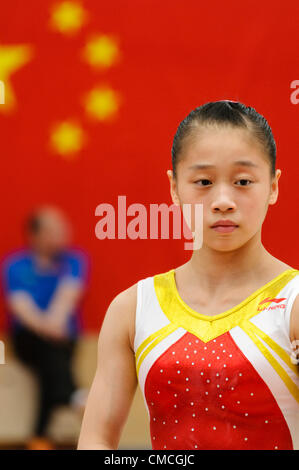

Unlike the national anthem we hear when see our athletes win, such songs are even more sentimental," Zhu Yu, a patriotic netizen in Beijing, told the Global Times on Monday. The moment when I heard my own culture enter the international stage made me feel so proud. "This is one of the moments when I feel sports are a type of art form that can make someone emotional. Other netizens said they were touched to see the Olympic spirit and patriotic emotions merge together. Set against the background of the War of Resistance against Japanese Aggression, the song "Jiu'er" tells a story about how 19-year-old girl Jiu'er in Gaomi, East China's Shandong Province, uses her bravery and wisdom to overcome various life difficulties. I don't think the song was meant to be 'sour,' especially playing in Japan, I think it was meaning to show the brave quality of young Chinese girls and this has never changed," Xue, a fan of the Olympic Games, opined to the Global Times on Monday.

"Jiu'er is depicted as a young girl around Tang's age.


"I really wish that Japanese audiences could know the background of this song, because it reflects true history," said a netizen on Sina Weibo. While some netizens wondered whether playing such a song with strong anti-Japanese aggression themes in Tokyo may have historical implications, many other netizens were more focused on expressing their pride at hearing a song depicting the Chinese spirit at the Olympic Games. Tang's choice of "Jiu'er" particularly inspired hot discussion on China's Twitter-like Sina Weibo. The first song is from My People, My Country, a film dedicated to the 70th anniversary of the founding of the People's Republic of China, while "Jiu'er" is a song from Zhang Yimou's famous 1987 War of Resistance against Japanese Aggression-themed film Red Sorghum. The two songs chosen for Tang's nearly two-minute performance carry strong patriotic sentiment. A young prominent Chinese athlete spearheading the Chinese women's team, Tang's steady performance during the floor exercise competition touched Chinese netizens, as did her choice of patriotic songs that sang out the spirit of China loud and clear at the Tokyo game. The more comfortable you get, the more mobile your handstand is.Chinese gymnast Tang Xijing Photo: VCG Eighteen-year-old Chinese gymnast Tang Xijing competed at the Women's Gymnastics Qualification for the Tokyo Olympics on Sunday. Another option is to dismount in a cartwheel-like motion. Stay close to the wall so you can put your feet back if you feel unstable. When you’re comfortable lifting one leg at a time into the handstand position, work towards extending both legs straight into the air. Once you get to where you can make a 90-degree angle with your body you can start to practice lifting one leg off the wall at a time to mimic a handstand position. Put your feet on the base of the wall behind you and slowly start walking them up the wall. Your hands should be shoulder-width apart with your fingers spread evenly. Starting with a wall, sit on the floor facing away from the wall and place your hands on the ground in front of you. Many gymnasts start by leaning on a vertical surface, usually walls, to get comfortable with the upside-down position. That’s why this is another gymnastics move that has levels. Handstandįor some, handstands might seem scary.


 0 kommentar(er)
0 kommentar(er)
